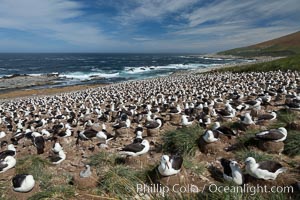
Black-browed albatross colony on Steeple Jason Island in the Falklands. This is the largest breeding colony of black-browed albatrosses in the world, numbering in the hundreds of thousands of breeding pairs. The albatrosses lay eggs in September and October, and tend a single chick that will fledge in about 120 days.
Species: Black-browed albatross, Thalassarche melanophrys
Location: Steeple Jason Island, Falkland Islands, United Kingdom
Image ID: 24157
Species: Black-browed albatross, Thalassarche melanophrys
Location: Steeple Jason Island, Falkland Islands, United Kingdom
Image ID: 24157
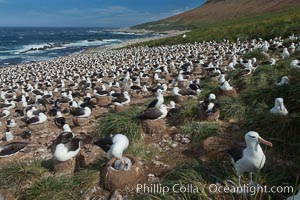
Black-browed albatross colony on Steeple Jason Island in the Falklands. This is the largest breeding colony of black-browed albatrosses in the world, numbering in the hundreds of thousands of breeding pairs. The albatrosses lay eggs in September and October, and tend a single chick that will fledge in about 120 days.
Species: Black-browed albatross, Thalassarche melanophrys
Location: Steeple Jason Island, Falkland Islands, United Kingdom
Image ID: 24160
Species: Black-browed albatross, Thalassarche melanophrys
Location: Steeple Jason Island, Falkland Islands, United Kingdom
Image ID: 24160
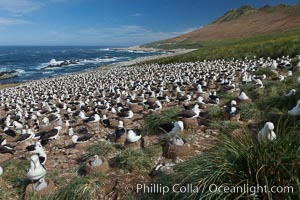
Black-browed albatross colony on Steeple Jason Island in the Falklands. This is the largest breeding colony of black-browed albatrosses in the world, numbering in the hundreds of thousands of breeding pairs. The albatrosses lay eggs in September and October, and tend a single chick that will fledge in about 120 days.
Species: Black-browed albatross, Thalassarche melanophrys
Location: Steeple Jason Island, Falkland Islands, United Kingdom
Image ID: 24265
Species: Black-browed albatross, Thalassarche melanophrys
Location: Steeple Jason Island, Falkland Islands, United Kingdom
Image ID: 24265
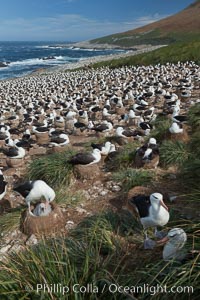
Black-browed albatross colony on Steeple Jason Island in the Falklands. This is the largest breeding colony of black-browed albatrosses in the world, numbering in the hundreds of thousands of breeding pairs. The albatrosses lay eggs in September and October, and tend a single chick that will fledge in about 120 days.
Species: Black-browed albatross, Thalassarche melanophrys
Location: Steeple Jason Island, Falkland Islands, United Kingdom
Image ID: 24267
Species: Black-browed albatross, Thalassarche melanophrys
Location: Steeple Jason Island, Falkland Islands, United Kingdom
Image ID: 24267
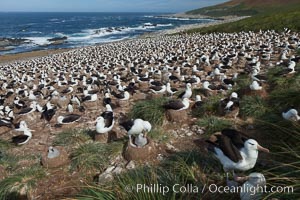
Black-browed albatross colony on Steeple Jason Island in the Falklands. This is the largest breeding colony of black-browed albatrosses in the world, numbering in the hundreds of thousands of breeding pairs. The albatrosses lay eggs in September and October, and tend a single chick that will fledge in about 120 days.
Species: Black-browed albatross, Thalassarche melanophrys
Location: Steeple Jason Island, Falkland Islands, United Kingdom
Image ID: 24268
Species: Black-browed albatross, Thalassarche melanophrys
Location: Steeple Jason Island, Falkland Islands, United Kingdom
Image ID: 24268
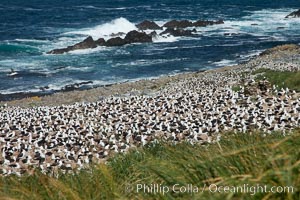
Black-browed albatross colony on Steeple Jason Island in the Falklands. This is the largest breeding colony of black-browed albatrosses in the world, numbering in the hundreds of thousands of breeding pairs. The albatrosses lay eggs in September and October, and tend a single chick that will fledge in about 120 days.
Species: Black-browed albatross, Thalassarche melanophrys
Location: Steeple Jason Island, Falkland Islands, United Kingdom
Image ID: 24269
Species: Black-browed albatross, Thalassarche melanophrys
Location: Steeple Jason Island, Falkland Islands, United Kingdom
Image ID: 24269
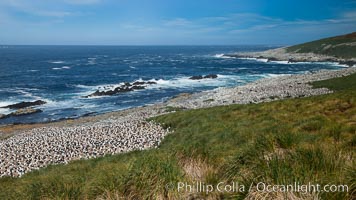
Black-browed albatross colony on Steeple Jason Island in the Falklands. This is the largest breeding colony of black-browed albatrosses in the world, numbering in the hundreds of thousands of breeding pairs. The albatrosses lay eggs in September and October, and tend a single chick that will fledge in about 120 days.
Species: Black-browed albatross, Thalassarche melanophrys
Location: Steeple Jason Island, Falkland Islands, United Kingdom
Image ID: 24270
Species: Black-browed albatross, Thalassarche melanophrys
Location: Steeple Jason Island, Falkland Islands, United Kingdom
Image ID: 24270
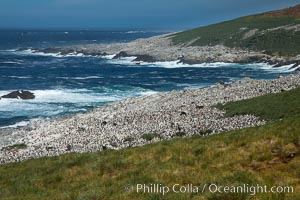
Black-browed albatross colony on Steeple Jason Island in the Falklands. This is the largest breeding colony of black-browed albatrosses in the world, numbering in the hundreds of thousands of breeding pairs. The albatrosses lay eggs in September and October, and tend a single chick that will fledge in about 120 days.
Species: Black-browed albatross, Thalassarche melanophrys
Location: Steeple Jason Island, Falkland Islands, United Kingdom
Image ID: 24271
Species: Black-browed albatross, Thalassarche melanophrys
Location: Steeple Jason Island, Falkland Islands, United Kingdom
Image ID: 24271
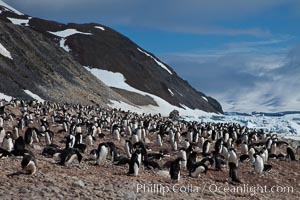
Adelie penguins, nesting, part of the enormous colony on Paulet Island, with the tall ramparts of the island and clouds seen in the background. Adelie penguins nest on open ground and assemble nests made of hundreds of small stones.
Species: Adelie penguin, Pygoscelis adeliae
Location: Paulet Island, Antarctic Peninsula, Antarctica
Image ID: 25152
Species: Adelie penguin, Pygoscelis adeliae
Location: Paulet Island, Antarctic Peninsula, Antarctica
Image ID: 25152
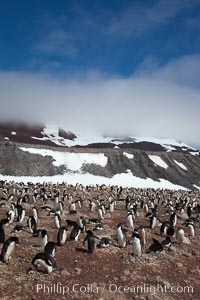
Adelie penguins, nesting, part of the enormous colony on Paulet Island, with the tall ramparts of the island and clouds seen in the background. Adelie penguins nest on open ground and assemble nests made of hundreds of small stones.
Species: Adelie penguin, Pygoscelis adeliae
Location: Paulet Island, Antarctic Peninsula, Antarctica
Image ID: 25153
Species: Adelie penguin, Pygoscelis adeliae
Location: Paulet Island, Antarctic Peninsula, Antarctica
Image ID: 25153
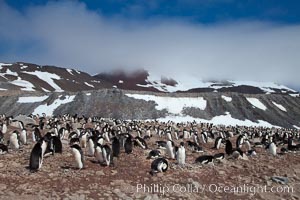
Adelie penguins, nesting, part of the enormous colony on Paulet Island, with the tall ramparts of the island and clouds seen in the background. Adelie penguins nest on open ground and assemble nests made of hundreds of small stones.
Species: Adelie penguin, Pygoscelis adeliae
Location: Paulet Island, Antarctic Peninsula, Antarctica
Image ID: 25154
Species: Adelie penguin, Pygoscelis adeliae
Location: Paulet Island, Antarctic Peninsula, Antarctica
Image ID: 25154
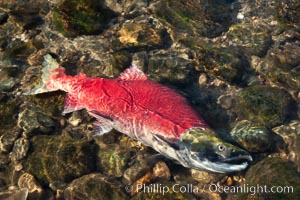
A sockeye salmon, a male sockeye dying on the edge of the Adams River, has completed its journey of hundreds of miles upstream inthe Fraser and Adams Rivers just to reach this spot, so that it can fertilize a females nest of eggs before dying.
Species: Sockeye salmon, Oncorhynchus nerka
Location: Adams River, Roderick Haig-Brown Provincial Park, British Columbia, Canada
Image ID: 26182
Species: Sockeye salmon, Oncorhynchus nerka
Location: Adams River, Roderick Haig-Brown Provincial Park, British Columbia, Canada
Image ID: 26182
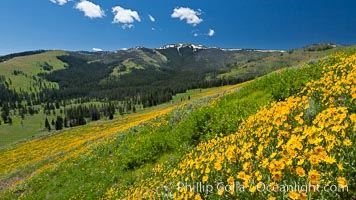
Wildflowers on Mount Washburn, on the north side of Dunraven Pass near Tower Junction.
Species: Little sunflower, One-eyed sunflower, Helianthella uniflora
Location: Yellowstone National Park, Wyoming
Image ID: 26941
Species: Little sunflower, One-eyed sunflower, Helianthella uniflora
Location: Yellowstone National Park, Wyoming
Image ID: 26941
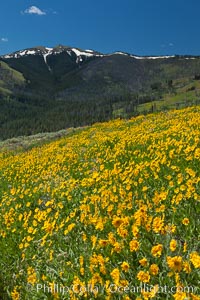
Wildflowers on Mount Washburn, on the north side of Dunraven Pass near Tower Junction.
Species: Little sunflower, One-eyed sunflower, Helianthella uniflora
Location: Yellowstone National Park, Wyoming
Image ID: 26950
Species: Little sunflower, One-eyed sunflower, Helianthella uniflora
Location: Yellowstone National Park, Wyoming
Image ID: 26950
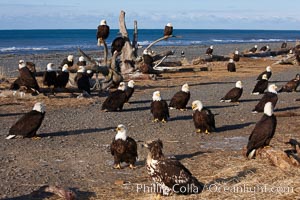
Bald eagles, part of a group of several hundred, perch on driftwood and stand on the ground waiting to be fed frozen herring as part of the Homer "Eagle Lady's" winter eagle feeding program.
Species: Bald eagle, Haliaeetus leucocephalus, Haliaeetus leucocephalus washingtoniensis
Location: Kachemak Bay, Homer, Alaska
Image ID: 22864
Species: Bald eagle, Haliaeetus leucocephalus, Haliaeetus leucocephalus washingtoniensis
Location: Kachemak Bay, Homer, Alaska
Image ID: 22864
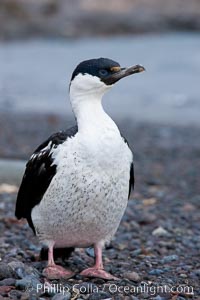
Imperial shag, or blue-eyed shag.
Species: Imperial shag, Leucocarbo atriceps, Phalacrocorax atriceps
Location: Livingston Island, Antarctic Peninsula, Antarctica
Image ID: 25933
Species: Imperial shag, Leucocarbo atriceps, Phalacrocorax atriceps
Location: Livingston Island, Antarctic Peninsula, Antarctica
Image ID: 25933
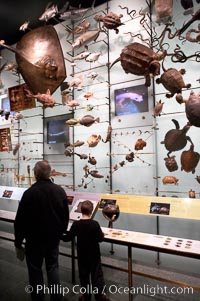
Visitors admire hundreds of species at the Hall of Biodiversity, American Museum of Natural History.
Location: American Museum of Natural History, New York City
Image ID: 11220
Location: American Museum of Natural History, New York City
Image ID: 11220
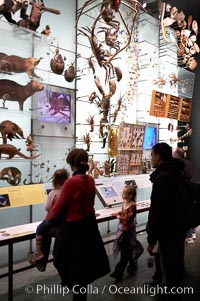
Visitors admire hundreds of species at the Hall of Biodiversity, American Museum of Natural History.
Location: American Museum of Natural History, New York City
Image ID: 11221
Location: American Museum of Natural History, New York City
Image ID: 11221
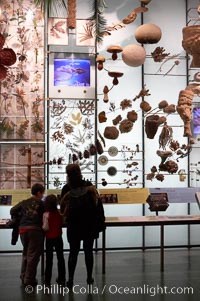
Visitors admire hundreds of species at the Hall of Biodiversity, American Museum of Natural History.
Location: American Museum of Natural History, New York City
Image ID: 11222
Location: American Museum of Natural History, New York City
Image ID: 11222
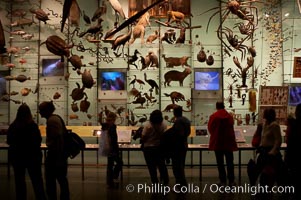
Visitors admire hundreds of species at the Hall of Biodiversity, American Museum of Natural History.
Location: American Museum of Natural History, New York City
Image ID: 11223
Location: American Museum of Natural History, New York City
Image ID: 11223
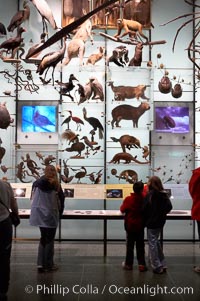
Visitors admire hundreds of species at the Hall of Biodiversity, American Museum of Natural History.
Location: American Museum of Natural History, New York City
Image ID: 11224
Location: American Museum of Natural History, New York City
Image ID: 11224
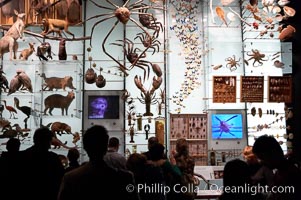
Visitors admire hundreds of species at the Hall of Biodiversity, American Museum of Natural History.
Location: American Museum of Natural History, New York City
Image ID: 11225
Location: American Museum of Natural History, New York City
Image ID: 11225
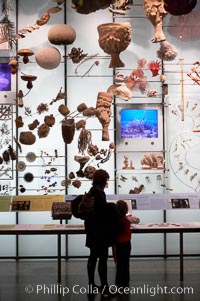
Visitors admire hundreds of species at the Hall of Biodiversity, American Museum of Natural History.
Location: American Museum of Natural History, New York City
Image ID: 11226
Location: American Museum of Natural History, New York City
Image ID: 11226
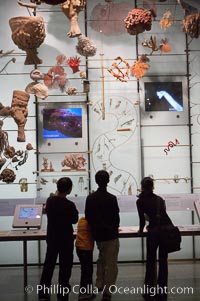
Visitors admire hundreds of species at the Hall of Biodiversity, American Museum of Natural History.
Location: American Museum of Natural History, New York City
Image ID: 11227
Location: American Museum of Natural History, New York City
Image ID: 11227
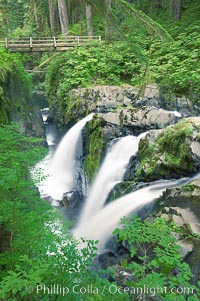
Sol Duc Falls. Sol Duc Falls is one of the largest and most beautiful waterfalls in Olympic National Park. Surrounding the falls is an old-growth forest of hemlocks and douglas firs, some of which are three hundred years in age.
Location: Sol Duc Springs, Olympic National Park, Washington
Image ID: 13749
Location: Sol Duc Springs, Olympic National Park, Washington
Image ID: 13749
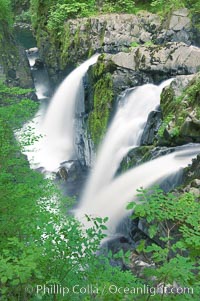
Sol Duc Falls. Sol Duc Falls is one of the largest and most beautiful waterfalls in Olympic National Park. Surrounding the falls is an old-growth forest of hemlocks and douglas firs, some of which are three hundred years in age.
Location: Sol Duc Springs, Olympic National Park, Washington
Image ID: 13750
Location: Sol Duc Springs, Olympic National Park, Washington
Image ID: 13750
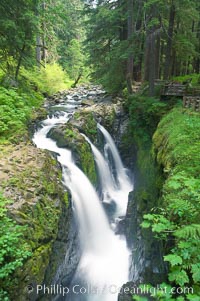
Sol Duc Falls. Sol Duc Falls is one of the largest and most beautiful waterfalls in Olympic National Park, seen here from a bridge that crosses the canyon just below the falls. Surrounding the falls is an old-growth forest of hemlocks and douglas firs, some of which are three hundred years in age.
Location: Sol Duc Springs, Olympic National Park, Washington
Image ID: 13751
Location: Sol Duc Springs, Olympic National Park, Washington
Image ID: 13751
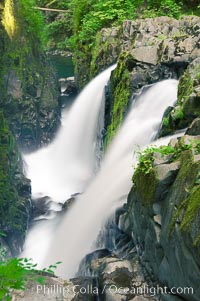
Sol Duc Falls. Sol Duc Falls is one of the largest and most beautiful waterfalls in Olympic National Park. Surrounding the falls is an old-growth forest of hemlocks and douglas firs, some of which are three hundred years in age.
Location: Sol Duc Springs, Olympic National Park, Washington
Image ID: 13752
Location: Sol Duc Springs, Olympic National Park, Washington
Image ID: 13752
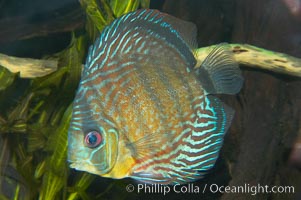
Wild discus. The female wild discuss will lay several hundred eggs and guard them until they hatch. Once they emerge, the young fish attach themselves to the sides of their parents for the first few weeks of their lives, feeding on a milky secretion produced by glands in the parents flanks.
Species: Wild discus, Symphysodon discus
Image ID: 13953
Species: Wild discus, Symphysodon discus
Image ID: 13953
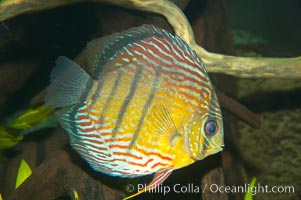
Wild discus. The female wild discuss will lay several hundred eggs and guard them until they hatch. Once they emerge, the young fish attach themselves to the sides of their parents for the first few weeks of their lives, feeding on a milky secretion produced by glands in the parents flanks.
Species: Wild discus, Symphysodon discus
Image ID: 13954
Species: Wild discus, Symphysodon discus
Image ID: 13954